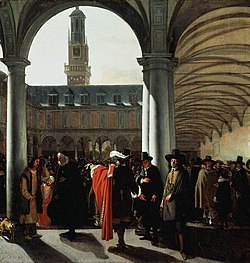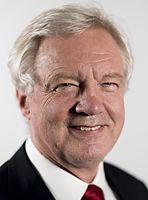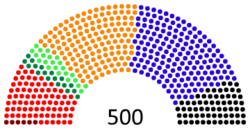User:Glitter/Sandbox6
Ashcombe
Flurland
Flurland | |
|---|---|
Republic of Estmere |
Kingsport
Kingsport | |
|---|---|
Estmerish Overseas Territory | |
| Motto(s): Ours is the Right | |
| Capital | Kingston |
| Estmerish settlement | 1601 |
| Named for | Henry King |
| Leaders | |
• President | Alice Roberts |
• Governor | Edwina Filmore |
• Executive | Maurice Renouf |
| Legislature | Territorial Council |
| Area | |
• Total | 1,129 km2 (436 sq mi) |
| Population | |
• 2018 estimate | 34,581 |
• Density | 30.63/km2 (79.3/sq mi) |
| Currency | Euclo (EUC (€)) |
| Calling code | +42-21 |
Kingsport is a island in the Mid-Vehemens Ocean located off the coast of Tabora. It is an Estmerish Overseas Territory. While officially referred to in the singular, Kingsport includes a number of smaller islands that make up the Rutherford archipelago. It has a total area of 1,129 kilometres squared and a population of 34,581 (2018 estimate). The capital city and largest settlement is Kingston. Kingsport is self-governing and has its own government which is responsible for local laws. It is named for Henry King, a 16th century Estmerish admiral.
The island was inhabited by Imerinans prior to Euclean settlement. It first came under the control of the Matambing Empire in the 14th century and was later conquered by Estmere in 1601. It was an important stop for ships traveling from Coius to Euclea and the Asterias. The main island hosts a large naval base that is home to nearly 8,000 service-members and their families.
Name
Kingsport is named after Henry King, a prominent 16th century Estmerish admiral. A small trading port was originally constructed on the island and completed in 1602, which was then called King's Port. The native name for Kingsport's main islands is Pulau Hujung, which has been translated into Estmerish as the "island at the end". This is a reference to the island's location on the periphery of the Tuarikain archipelago.
St Robert's and Fleming
St Robert's and Fleming | |
|---|---|
Estmerish Overseas Territory | |
| Leaders | |
• President | Alice Roberts |
• Governor | John Gimmuzibi |
• Executive | Marcus Freeman |
| Legislature | Territorial Council |
| Population | |
• 2018 estimate | 748,360 |
| Currency | Euclo (EUC (€)) |
| Calling code | +42-22 |
Wealdland
Wealdland | |
|---|---|
Republic of Estmere |
Culture
National identity
Estmere parties
This article lists political parties in Estmere.
Parties with federal representation
| Party logo | Party name | Leader | Status | Seats in the Lesser House | Euclean Parliament seats |
Ideology | |
|---|---|---|---|---|---|---|---|
| National Union Party Theedish Fay Union nationale |
 Reginald Wilton-Smyth |
In Government | 169 / 500
|
17 / 118
|
Conservatism Neoliberalism Social conservatism Liberal conservatism | ||
| The NUP was founded in 1937 following Estmere's transition to a republican government. It succeeded the National Conservative Party as the party of the right. It dominated the post-war years and has formed the most governments of any party since Estmere's establishment as a republic. It entered into an electoral alliance with the Progressives since 1976. Their coalition has only been unseated twice, first in 1992 and later in 2008. The party has faced a decline in recent years, losing support to other right-wing parties. In 2016, the first NUP-led government was formed since 2004. It is currently the senior partner in the Federal Appeal coalition. | |||||||
| The Progressives Se Forblowings Les progressistes |
 Oliver Osborne |
In Government | 142 / 500
|
25 / 118
|
Social liberalism Progressivism Sotirian democracy | ||
| The Progressives were formed in 1965 following a merger of the Liberal Party, the Sotirian Social Party, and the Solarian Catholic People's Party. It was established a secular party with a centrist platform that positioned itself as the moderate alternative to both the right-wing National Union Party and the left-wing Democratic Labour Party. Overtime, the party has become increasingly socially liberally and has a growing soft left wing. It has formed a number of governments since 1968 and entered into an electoral alliance with the NUP in 1976. The last Progressives led government was formed in 2012 after Federal Appeal returned to power after being unseated by Estmere First in 2008. It is currently the junior partner in the Federal Appeal coalition. | |||||||
| Democratic Labour Party Folks Arvethpartie Parti démocratique travailliste |
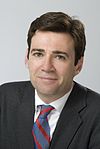 Robert Spencers |
In Opposition | 78 / 500
|
33 / 118
|
Social democracy Democratic socialism | ||
| Founded in 1937, the Democratic Labour Party was established as the party of the Estmerish left. It has struggled to gain traction due to the anti-left alliance of the DLP and the Progressives, the latter of which has ties to the country's traditional sectarian trade unions. It has relied on secular trade unions as its support base. The party only formed a government 1992 in the aftermath of the 1989 political crisis. Its tenure in government was racked by infighting, bringing it back to the opposition. It is traditionally the largest opposition party. | |||||||
| Estmere First Eastmarchon Forthgo L'Estme d'abord |
 George Avery |
In Opposition | 64 / 500
|
5 / 118
|
Estmerish nationalism Conservatism Soft-euclosceptism Populism | ||
| Estmere First was formed in 1984 by right-wing members of the National Union Party who were opposed to Estmerish participation in the Euclozone. It positioned itself as conservative party that drew inspiration from National Conservatism and had a smaller classical liberal faction. Support for the party grew during the 1990s and after the 2005 World Financial Crisis it capitalized on anti-government sentiments. It formed a government following the 2008 general election and held a referendum on withdrawal from the Euclozone in 2010, which was defeated. The party was hit by a number of scandals during its tenure. It was defeated in 2012 by Federal Appeal and a number of its members were prosecuted by the Sharpe Government. Support for Estmere First has since declined, losing supporters to the NUP or to the recently formed National Interest - Party for Democracy. | |||||||
Old Estmere Page
Federated Republics of Estmere Républyiques fédératives d'Estme Rikeband of Eastmarchon | |
|---|---|
Flag
Coat of arms
| |
| Motto: Liberty and Prosperity | |
| Anthem: I Vow to Thee, Dear Estmere | |
| The Estmere (dark green) in Euclea (light green and light grey) and in the Euclean Community (light green). The Estmere (dark green) in Euclea (light green and light grey) and in the Euclean Community (light green). | |
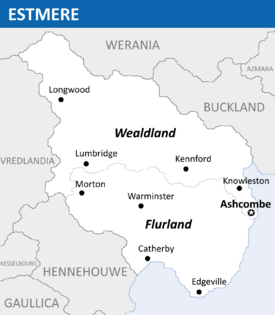 | |
| Capital and largest city | Ashcombe |
| Official languages | Estmerish |
| Recognised national languages | Swathish, Flurian |
| Demonym(s) | Estmerish |
| Government | Federal parliamentary constitutional republic |
• President | Alice Roberts |
• Prime Minister | Reginald Wilton-Smyth |
| Legislature | Federal Parliament |
| Greater House | |
| Lesser House | |
| Establishment | |
• Kingdom of Embria | 11th Century |
• United Counties | 12th/13th Century |
• Kingdom of Estmere | 19th Century |
• Republic established | 1937 |
• Founded the EC | 1 January 1948 |
| Area | |
• | 284,874 km2 (109,990 sq mi) |
| Population | |
• 2017 estimate | 57,301,500 |
• 2015 census | 56,519,373 |
• Density | 198.40/km2 (513.9/sq mi) |
| GDP (PPP) | estimate |
• Total | $2.605 trillion |
• Per capita | $46,091 |
| GDP (nominal) | estimate |
• Total | $2.533 trillion |
• Per capita | $44,826 |
| Gini (2012) | low |
| HDI | 0.891 very high |
| Currency | Euclo (EUC (€)) |
| Time zone | Euclean Standard Time |
| Date format | dd-mm-yy |
| Driving side | right |
| Calling code | +42 |
| ISO 3166 code | EST |
| Internet TLD | .es |
Estmere, officially known as the Federated Republics of Estmere is a country located in northern Euclea. It is bordered by Borland, Hennehouwe, Werania, and the Gulf of Assonaire. Estmere is a large nation with a population of about 57 million people. The country is home to three prominent ethnic groups: the Estmerish, the Flurians, and the Weranic Swathish peoples. The Estmerish make up the largest portion of the population at about 42%, followed by the Flurians and Swathish respectively. The majority of the population, 67%, speaks Estmerish as their primary language. However, strong Swathish and Flurian speaking communities maintain a strong presence.
The Swathish peoples migrated southward from Werania. During the 10th century, after the Verloquoian acquisition of the Hennish Counties, powerful Verique lords launched a series of conquests into modern-day Estmere, defeating the native Swathish petty kingdoms. Much of what constitutes modern-day Estmere came under the control of Verique lords, who threw their support behind Richard Harcourt, the Count of Ashcombe. Estmere was first known as the Kingdom of Embria with Richard serving as its King. After [a certain amount of time] a devastating war for control over the kingdom broke out between claimants to the throne, which saw it fracture for several years. This conflict was known as the Anarchy and caused significant chaos. Many of the Harcourt heirs were killed in the fighting and those that survived remained unpopular for their role in the collapse of the country. Clovis Vernon, the Count Vernon, managed to secure the support of a powerful group of nobles who formed the States Council. The council elected Clovis as its de facto leader and the nobles who participated swore their armies to him. Vernon then waged a campaign to reunite the shattered kingdom in which he saw success. This saw the establishment of the Estmerish Commonwealth.
Through this crowned republic, the Estates of Estmere, which had evolved out of the States Council, would elect the Bailiff-General. For his role in restoring order to Estmere, Clovis was elevated to the Prince of Vernon. His dynasty remained dominant in what acted as a hereditary republic for six centuries. This led to the rise of a very powerful noble class of Verique origin, which overtime evolved into being culturally Estmerish. Renaissance and Colonial Era History here.
During the 19th Century, a series of liberal reforms under the reign of Richard VIII saw the republic reformed into the Kingdom of Estmere. The Parliament also became bicameral, with the hereditary Greater House and the elected Lesser House. Estmere fought on the side of the Grand Alliance during the Great War and was an early backer of the Senria against Xiaodong. The country was overrun by Gaullican forces in 1928 and the government was forced into exile. It remained occupied until the end of the war in 1935. After a failed communist revolution, the Kingdom of Estmere was reformed into the Federated Republics of Estmere in 1936. This saw the creation of the sister republics of Wealdland and Fleurland and a special capital territory, the Federal City of Ashcombe. Despite the abolition of the monarchy, the aristocracy remained very powerful and makes up most of the societal elite.
Today, Estmere is a federal constitutional republic with a parliamentary system of governance. The head of state is the president, currently Alice Roberts (Ind.). The government is led by the prime minister, with Reginald Wilton-Smyth (NUP) serving as the incumbent. The legislature is known as the Federal Parliament, a bicameral body consisting of the Greater House and the Lesser House. Estmere is divided into two republics and one federal district. The two republics, affectionately known as the twin republics, are the ethnically Swathish republic of Wealdland in the north and the mostly ethnically Flurian region of Flurland in the south. Each republic has its own executive, legislature, and high court and enjoy many devolved powers. Ashcombe, a special Federal City, is an officially tri-lingual (Estmerish, Swathish, and Flurian) located on the country's coastline.
Etymology
The name Estmere is derived from the Old Swathish ēast, originally meaning "Dawn" and obtaining, over time, a connotation with the direction that the sun rose, thus becoming a poetic replacement for former dawnward in Middle Swathish. The transition to Middle Swathish este as common parlance instead of a poetic filler was seemingly complete by the middle of the 13th century. The reduction of the word to est occurred under influence from the Flurian nobility, who had earlier adopted a Sveltish cognate austr under Gaullophonic influence to become est.
The second component of the name, -mere, is derived ultimately from Solarian mare. Although it is reflected well in Gaullican mer, the Flurian language of the time dictated their equivalent to be me, losing the word-final "-r". From modern speech and based off of Flurian toponymy, it can be deduced that the formal Flurian language was not entirely representative, and the informal dialects ranged between mair and me openly. Thus, it is assumed that modern -mere was derived from one of these common dialects, perhaps pronounced mir rather than the formal speech, in a very similar relation as that between Classical Solarian and Vulgar Solarian. As the local Swathian population originated inland, the more hydrocentric Flurian culture came to dominate in terms related to water in fields such as navigation, phasing out Swathian terms present in the newly-developing Old Estmerish with its own.
Thus, the name comes together, featuring est as a Weranic term present in Flurian and Middle Swathish alike, and mir derived from the Solarian bulk of the Flurian language. As spelling rules and phonology changed, and the mixed, but mostly Weranic-based, Estmerish language came to dominate with its own orthographic traditions, this would evolve into the modern form Estmere to replicate the older pronunciation by the 16th century.
History
Prehistory and antiquity
- Originally dominated by Tenic tribes that warred with the Solarian Empire and neighboring Weranic tribes
- Tenic tribes were slowly conquered by and absorbed into Weranic tribes
- Southernmost Estmere came under the control of the Solarian Empire and was administered as part of the Embrica Province from 10 CE to 370 CE until conquest by Weranic tribes
- Sotirianity was first introduced in the fourth century in Solarian Embrica and eventually spread north
- The gradual collapse of the Empire saw Embrica besieged by Weranic invasions, as Gaullica attempted to fend them off but was forced to withdraw behind the Some River or Some Wall?
Middle Ages
- Formation of the Swathish petty kingdoms
- Verique conquest of the Hennish Counties, subsequent Verique conquest of Estmere
- Establishment of the Kingdom of Embria by Richard Harcourt
- The Anarchy and fall of the Kingdom of Embria
- Establishment of the Commonwealth of the United Estmerish Counties
- 'The Long Peace' of the Vernons
Colonialism and the Estmerish Century

- Amendist Reformation in Estmere and the origins of the High and Low Estmerish churches
- Exploration of the Asterias by Estmerish explorers and early attempts at colonization
- The Four Sisters - the four Estmerish colonies in Northern Fed - 'New Estmere'
- Estmerish Century (1610s-1721) - Estmerish domination of global trade, advances in science, military power, and acclaimed art
- Struggle with Gaullica, Rudolphine Confederation in greater Amendist v Catholic struggle
- Gilded Wars
Consolidation and kingdom
- Pereramonic Wars
- Civil War
- Establishment of the Kingdom of Estmere
- Emergence of modern liberalism
- 'The New Empire' - acquisition of Hennish new world colonies, support for the Federation in War for Independence, conquest of Valentir
- Industrial Revolution
- Imperialism in Coius
- the Great War - rip Estmere press f
Since the Great War
- Establishment of the republic
- Support for the 'Democratic World Order'
- Decolonization
- Foundation of the EC
- Decline of Estmerish power
- Grand Coalitions
- DLP govt in the 1990s
- Eternal Coalition is back
- 2005 Recession
- Estmere First and the failed Euclozone Referendum
Politics
Governance
The governing doctrine of Estmere is its Constitution, which was drafted and ratified in 1937. It defines the federal system used to govern Estmere. It establishes three branches: the executive, legislative, and judicial branches. Likewise, it outlines the roles of provinces and their devolved branches of government.
The executive branch consists of the president, the prime minister, and the cabinet. The president is the head of state, meaning the role is largely ceremonial. The current President is Alice Roberts, an Independent, and has held the post since 2015. Terms last for five years and presidents are popularly elected using a plurality vote. Typically, president's three primary tasks are conducting official state visits, receiving diplomatic credentials, and formally appointing the prime minister, cabinet, and other federal positions. However, all of these roles are filled by the government in the legislature. The largest party, or coalition of parties, in Parliament form the government. The prime minister, the head of government, is chosen from among the MPs and puts together his or her cabinet. Reginald Wilton-Smyth is the current prime minister and is a member of the National Union Party. He has served as prime minister since following a party leadership contest in June 2019. The deputy prime minister is Anne Buckett of the Progressives. Likewise, prime ministers nominate candidates to fill all federal posts, including those in the judiciary and various federal agencies. At least 75% of cabinet ministers must be sitting MPs and serve at the pleasure of the prime minister. Ministers oversee the fourteen federal departments.
The Federal Parliament of Estmere (Rikebandish Allthing, Parlement) is the federal legislature and is bicameral. The principal house is the lower house, the Lesser House. It has 500 members known as Members of Parliament who are elected through mixed-member proportional representation. MPs serve a maximum four year terms and then it is mandated by the Constitution that fresh elections must be held. Snap elections may be held between the regularly scheduled elections. Federal elections always take place on the first Wednesday of September and under Estmerish law voting is mandatory. Election day is also a federal holiday and is observed throughout the country in order to make it easier for citizens to comply with the mandate. There is a 5% threshold for parties to achieve representation in Parliament. In total, there are 500 seats, 251 of which are needed for a majority. Currently there is a coalition between the National Union Party and the Progressives. The two maintain an electoral alliance known as the the Federal Appeal. The Speaker of the Lesser House presides over the lower house and is responsible for ensuring the agenda is kept. The government is always seated to the speaker's left. The upper house is the Greater House. It has 200 members known as Peers. Peers are appointed by the government when a vacancy opens following a death or resignation. They serve life terms. After the government is seated, parties are placed according to their location on the political spectrum from the speaker's left to right. The legislature is housed in the States Palace, located in Ashcombe.
The judicial branch at a national level is made up of various levels of federal courts. The highest court of Estmere is known as the Great Court of the Republics. It has appellate jurisdiction over all federal courts and over provincial court cases involving issues of federal law, plus original jurisdiction over a small range of cases. The Great Court alone has the final say on constitutionality, although it may only act within the context of a case for which it has jurisdiction. There are seven judges, known as magistrates, that serve on the court. It is presided over by the Principal Magistrate while the remaining six judges are known as High Magistrates. They are appointed by the prime minister and confirmed by Parliament. Once appointed, magistrates have life tenure unless they resign, retire, or are removed after impeachment. Other national courts are known as Federal Courts. The country is divided into nine circuits. There are four circuits within each of the two sister republics and one for the federal district. Counties are grouped into circuits based on population, and jurisdiction may change with each census.
Foreign relations and military
Estmere is viewed as a middle power in modern geopolitics but is historically regarded as a great power. Since the onset of the Post-War Era, Estmere has seen its geopolitical prominence slowly erode. Its current scope is largely limited to Euclea and Northern Coius. As its power as decline, Estmerish foreign policy has begun to focus heavily on multilateral solutions. Typically, Estmere uses a combination of multinational coalitions and international institutions to carry out its foreign policy goals and ensure its security.
Estmere is a founding member of the Community of Nations, the International Council for Democracy, and the Euclean Community. It enjoys a prominent role in international diplomacy due to its long history as a prominent geopolitical power. It is one of six nations within the Community of Nations to have permanent membership on all six international councils. Estmere sends the third largest delegation to the Euclean Parliament: 91 MEPs. It is also a member of the, C20, the International Trade Organisation, and the Global Institute for Fiscal Affairs. The country hosts a number of prominent international institutions, such as the International Court of Justice and the International Institute for Health.

As a member of the Euclean Community, Estmere participates in the defense component. Estmere maintains the third largest military within the EC, after Gaullica and Werania. The nation employs a professional, volunteer military force of approximately 110,000 active personnel and 50,00 reserve personnel. The unified Estmerish Defense Force (EDF) comprise the Estmerish Army, Federal Estmerish Navy, and Federal Estmerish Air Force. In 2015, Estmere's military expenditure totaled approximately €42 billion, or around 1.5% of the country's GDP. The current government intends to raise defense spending by .5% by 2020. Thus far, defense spending has been raised by an increment of .1% each year since 2015. Estmere is a nuclear power. It maintains a submarine fleet which is nuclear capable.
Historically, Estmere has maintained one of the largest armies and a powerful navy. At its peak, the Estmerish Royal Navy was the second largest fleet in the world in 1920. However, following the Great War Estmere's military entered a period of decline and began to shrink. Initially after the war, Estmere and Werania maintained large militaries while Gaullica was prevented from fielding an army by the terms of the Treaty of Verlois. The cost of maintaining a large military was burdensome, however, and in the 1960s Estmere and Werania agreed to allow Gaullica to once again field an army in order for Estmere to cut its own military expenditure. Successive governments continued to cut defense spending and liquidated outdated and expensive equipment. Between the 1960s and 1980s, Estmere closed or transferred all of its foreign military bases. Military installations are maintained on the islands of St. Robert's and Fleming, located in the Vehemens Ocean.
Administrative divisions
Economy
Estmere maintains a social market economy with partial regulations, low trade barriers and an extensive welfare state. It is the second largest economy in Euclea, with a GDP PPP of $2.882 trillion and a nominal GDP of $3.208 trillion. The Federal Treasury is the government organ responsible for setting its expenditure and implementing government financial policy. The National Development Council has generally coordinated Estmerish economic policy since the end of the Great War and Estmere's transition to a federal republic. The Federal Treasury and Secretariat for Labour and Pensions work in conjunction with corporate leaders and trade unions to set and implement national economic policy. The Federal Bank of Estmere acts as the central bank within the Euclozone banking system. As a member of the Euclozone, Estmere uses the Euclo as the national currency, having formally using the Federal Estmerish Shilling (previously the Royal Estmerish Shilling).
The cities of Ashcombe and Catherby are leading business and financial centers in Euclea. 32 of the world's 500 largest companies are headquarted in Estmere. 40 major Estmerish companies are traded on the Ashcombe Stock Exchange, one of the oldest in the world. The service sector accounts for 69% of the gross domestic product. A number of major service sector companies are based out of Estmere and operate throughout the EC. Industry contributes 30% and agriculture 1%.
Estmere has one of the oldest automotive industries. Automotive manufacturers in Estmere are regarded as being among the most innovative in the world. The industry has a global presence and is competitive. The Estmerish automotive industry is the fourth largest by production. Estmere also has robust heavy manufacturing sector. Its main exports include automobiles, machinery, transit equipment, electronics, chemicals, pharmaceuticals, and food products.
Euclea's largest port is Ashcombe and it is one of the busiest seaports in the world. Over 400 million metric tonnes of cargo pass through Ashsombe each year. Estmere's location on the eastern Euclean coastline gives it prime access to many of the EC's major markets. Goods are transported by road, rail, and ship after arriving in Ashcombe.
In the 1950s, large fields of natural gas were discovered off the coast of Estmere. The sale of natural gas has provided the government with additional revenue over the decades, adding millions to state spending. The government balanced development of its natural gas sector with other sectors of the economy, allowing traditional industry to maintain competitiveness. The country also has sizable coal deposits, but has gradually phased out coal mining since the 1980s.
Agriculture
Declining agriculture sector
Science and technology

Estmere has a long scientific tradition and is a global leader in science, technology, and research. Achievements in these fields have been significant and date back to the 17th century. Estmerish universities have one of the highest number of graduates in the sciences and engineering in the world. Many scientists and researchers have received recognition and scientific awards for their work.
Many important discoveries were made in Estmere during the Scientific Revolution. Robert Chamberlain established the laws of motion and the laws of gravity. Major discovers in mathematics were also made. Scientific exchange with other states in Eastern Euclea was common during this period. Despite their historical animosity, scientists in Gaullica and Estmere frequently collaborated and conducted joint research efforts starting as early as the 18th century. Scientists in Estmere also used the country's colonial empire as a way to conduct research globally. Important scientists and researches include William A. Salter, Philip Warren, Augustine Lambert, and Jacob Henderson.
Estmere has also been home to a number of famous inventors. Estmerish inventors and industrialists played a leading role in the Industrial Revolution, shaping the modern Estmerish economy. Major developments in transportation were also made in Estmere. The first railways opened in Estmere during the 1830s. Stephen Talbot, Charles Mortimer, George Holloway, and Augustine de la Day made major contributions to rail, automotive, and air travel. Esmtere also had a long naval history, with major contributions dating back to the 15th century.
Several global leaders in scientific research are based in Estmere. Estmerish research universities attract millions of students from around the world. Research institutions include Ashcombe Technical University, the Fitzsimons College of Science at the University of Warminister, the William A. Salter Institute, and the Chamberlain-Warren Society.






